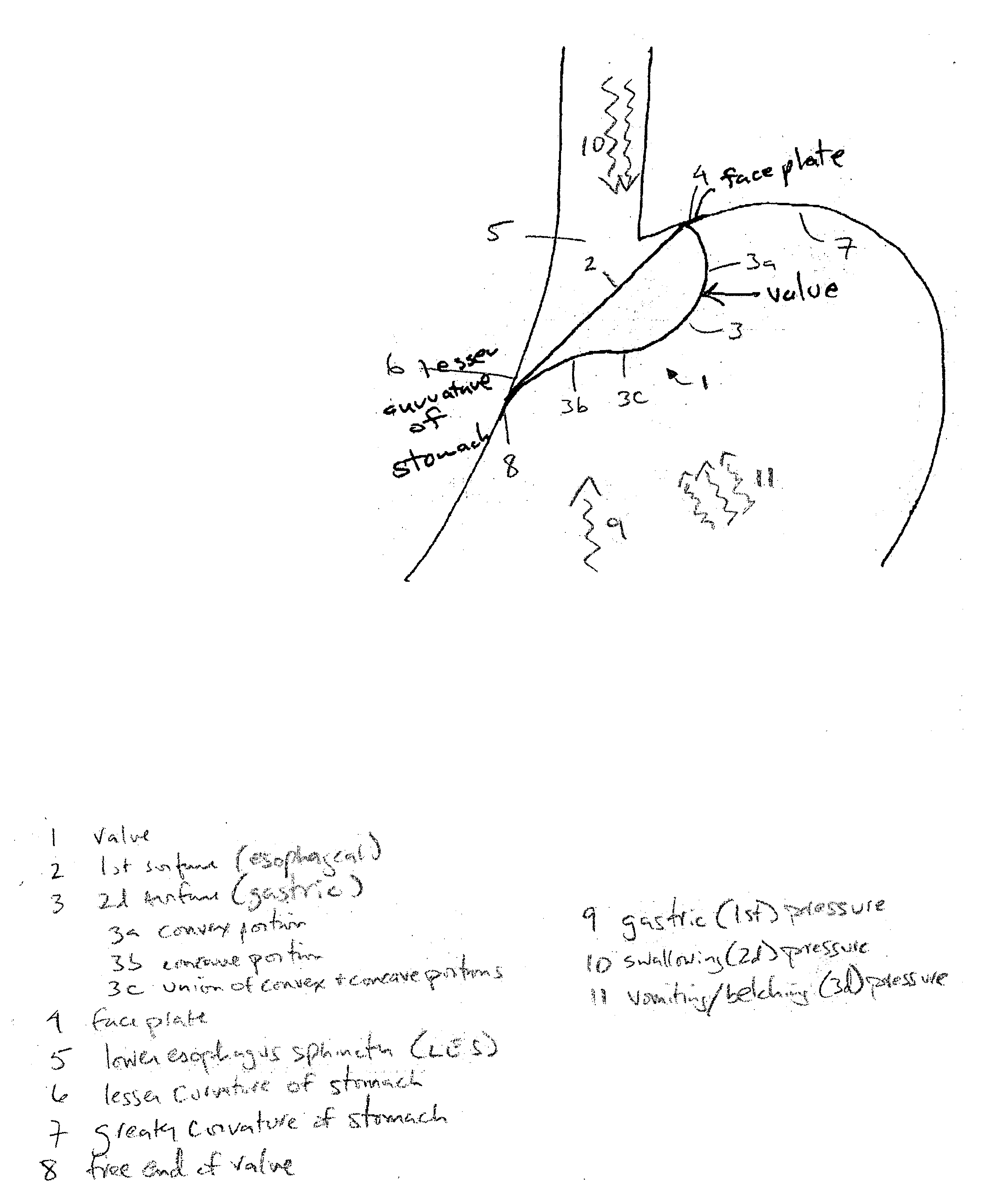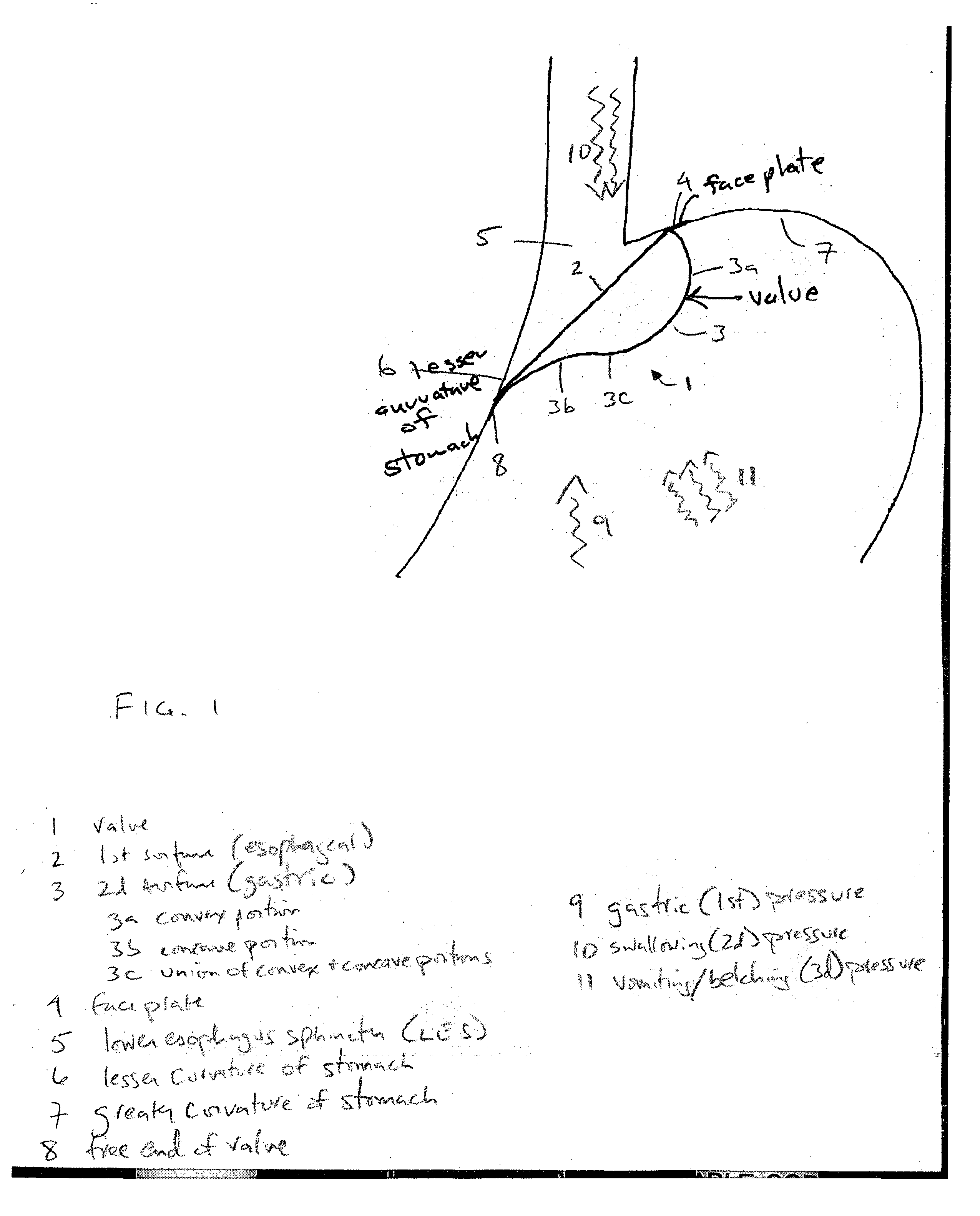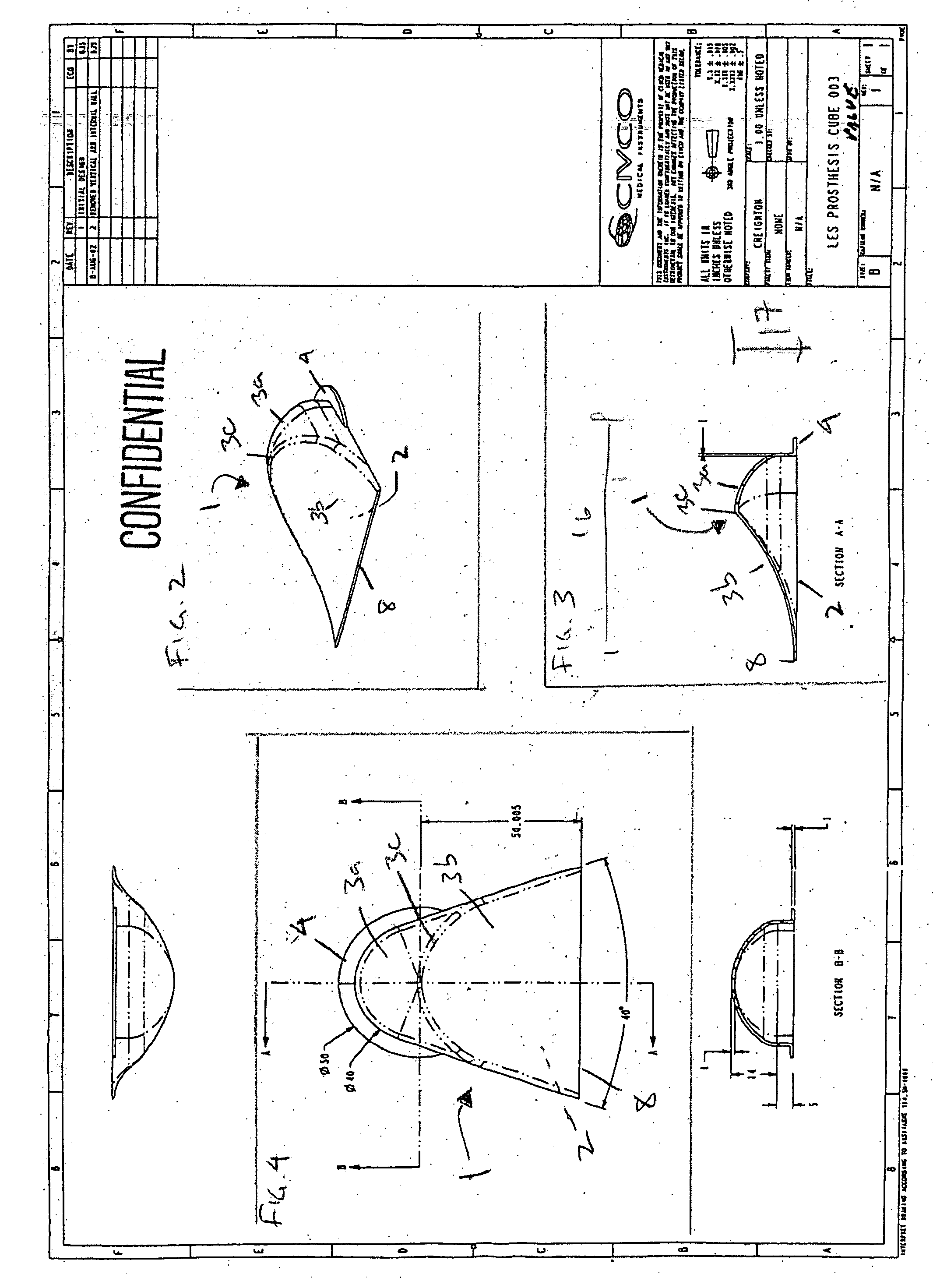Device and method for treating gastroesophageal reflux disease
a gastroesophageal reflux disease and device technology, applied in the field of devices and methods for treating gastroesophageal reflux disease, can solve the problems of barrett's esophagus, esophageal cancer, esophageal reflux disease, etc., to inhibit the reflux of matter, less obstruction, and even unobstructed effect of esophagus function
- Summary
- Abstract
- Description
- Claims
- Application Information
AI Technical Summary
Benefits of technology
Problems solved by technology
Method used
Image
Examples
Embodiment Construction
[0028] Referring to FIG. 1, a prosthetic anti-reflux valve 1 in accordance with an embodiment of the present invention is illustrated in contact with the greater curvature of the stomach 7 and the lesser curvature of the stomach 6 and in proximity to the lower esophageal sphincter (LES) 5.
[0029] The valve 1 is secured to the greater curvature of the stomach 7 at its face plate 4, a thickened portion of the esophageal (first) surface 2 extending beyond the convex end 3a of the gastric (second) surface 3 of the valve. The free end of the valve 8 is unattached and rests against the lesser curvature of the stomach 6 in response to normal gastric pressure 9. In this position, the esophageal (first) surface 2 faces the LES 5 and the gastric (second) surface 3 faces the interior of the stomach.
[0030] Referring to FIG. 2, in this embodiment, the anti-reflux valve 1 is generally comprised of an esophageal (first) surface 2, a gastric (second) surface 3, and a face plate 4. The gastric surf...
PUM
 Login to View More
Login to View More Abstract
Description
Claims
Application Information
 Login to View More
Login to View More - R&D
- Intellectual Property
- Life Sciences
- Materials
- Tech Scout
- Unparalleled Data Quality
- Higher Quality Content
- 60% Fewer Hallucinations
Browse by: Latest US Patents, China's latest patents, Technical Efficacy Thesaurus, Application Domain, Technology Topic, Popular Technical Reports.
© 2025 PatSnap. All rights reserved.Legal|Privacy policy|Modern Slavery Act Transparency Statement|Sitemap|About US| Contact US: help@patsnap.com



